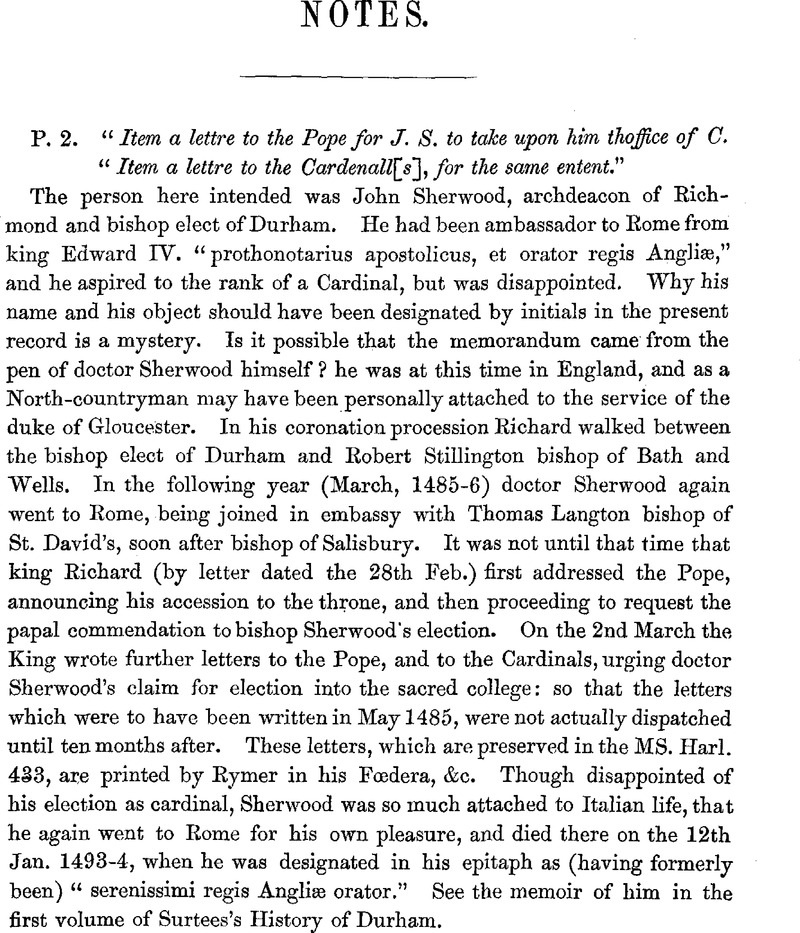No CrossRef data available.
Article contents
Notes
Published online by Cambridge University Press: 25 March 2010
Abstract

- Type
- Notes
- Information
- Camden Old Series , Volume 60: Grants, etc. from the Crown during the Reign of Edward the Fifth , December 1854 , pp. lxiv - lxvii
- Copyright
- Copyright © Royal Historical Society 0000
References
page lxv note * The transmission of the higher dignities of the peerage in England by heirs female has been less recognised by those who have written on the subject than historical evidences would justify. It was a principle always acknowledged, though of course we have not the confirmatory proof that the lawyers have required,—that of sitting in parliament. As an example somewhat parallel to the present may be mentioned the instance of another princess, Margaret daughter and heir of Thomas of Brotherton, Earl of Norfolk. She was never created a countess ; yet she is designated Countess of Norfolk in the rolls of parliament 21 Ric. III. (vol. iii. p. 355), and also at the end of a writ of 35 Edw. III. quoted by Banks in his Baronia Anglica Concentrata, i. 33; and, when her son John Mowbray was created a duke in 1397, she also was elevated to the like degree. So Anne Beauehamp, the infant heiress of the earldom of Warwick, who died in 1449, æt. 10, had the title of Countess of Warwick, as Dugdale states in his Baronage, i. 248. The same principle was admitted in the case of the daughter of the duke of Clarence and mother of the Poles, whose title to the earldom of Salisbury was confirmed by act of parliament in 1513.




